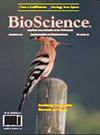西亚马逊可可栽培下考古暗土化学属性的空间变异
IF 0.6
4区 农林科学
引用次数: 2
摘要
当前位置考古暗土(ADEs)是肥沃的土壤,比亚马逊地区绝大多数典型的土壤都要好得多。由于这些土壤具有磷、钙、镁等养分含量高的优良特性,对其研究日益深入。因此,本研究的目的是评价Apuí (AM)市可可种植黑色考古土土壤化学属性的空间分布。绘制42 × 88 m网格,不规则间距为6 × 8 m,共88个点,然后采集深度为0.0 ~ 0.05的土壤样品;0.05 - -0.10;(pH值、O.C国航C (H + Al), P, K, Ca、Mg,某人,CEC和V %)。数据分析使用描述性和地质统计学统计技术。平均值和中位数调整为接近正态分布,土壤化学属性调整为球形和指数半方差模型。大多数属性的变异系数(CV)在12.1 ~ 60%之间,表现为平均变异,研究变量的范围不同,且大多数具有较强的空间依赖性。所使用的地质统计学技术允许对最能代表实验半方差的理论模型进行调整,从而能够构建研究区域属性值空间分布的专题地图。本文章由计算机程序翻译,如有差异,请以英文原文为准。
Spatial variation of chemical attributes in archaeological dark earth under cocoa cultivation in Western Amazon
: Archeological Dark Earths (ADEs) are fertility soils that are notoriously superior to the vast majority of soils typical of the Amazon region. The study on ADEs has intensified due to the good characteristics presented by these soils, such as high concentration of nutrients (phosphorus, calcium, magnesium). In this sense, the aim of this study was to evaluate the spatial distribution of soil chemical attributes in an area of black archeological earth soil under cocoa cultivation in the municipality of Apuí (AM). The mapping of a 42 x 88 m mesh, with irregular spacing of 6 x 8 m, totaling 88 points, was carried out, and then soil samples were collected at depths of 0.0-0.05; 0.05-0.10; (pH, O.C, Sto C, (H+Al), P, K, Ca, Mg, SB, CEC and V%). Data were analyzed using descriptive and geostatistical statistics techniques. The mean and median values were adjusted to the near values, indicating normal distribution, while the soil chemical attributes were adjusted to the spherical and exponential semivariograms models. The majority of the attributes presented coefficient of variation (CV) between 12.1 and 60%, characterized as average variability, the variables in the study presented different ranges and most of them had a strong spatial dependence. The geostatistical techniques used allowed the adjustments of the theoretical models that best represented the experimental semivariance, thus enabling the construction of thematic maps of the spatial distribution of the values of the attributes of the studied area.
求助全文
通过发布文献求助,成功后即可免费获取论文全文。
去求助
来源期刊

Bioscience Journal
AGRICULTURE, MULTIDISCIPLINARY-AGRONOMY
CiteScore
1.10
自引率
0.00%
发文量
90
期刊介绍:
The Bioscience Journal is an interdisciplinary electronic journal that publishes scientific articles in the areas of Agricultural Sciences, Biological Sciences and Health Sciences. Its mission is to disseminate new knowledge while contributing to the development of science in the country and in the world. The journal is published in a continuous flow, in English. The opinions and concepts expressed in the published articles are the sole responsibility of their authors.
 求助内容:
求助内容: 应助结果提醒方式:
应助结果提醒方式:


